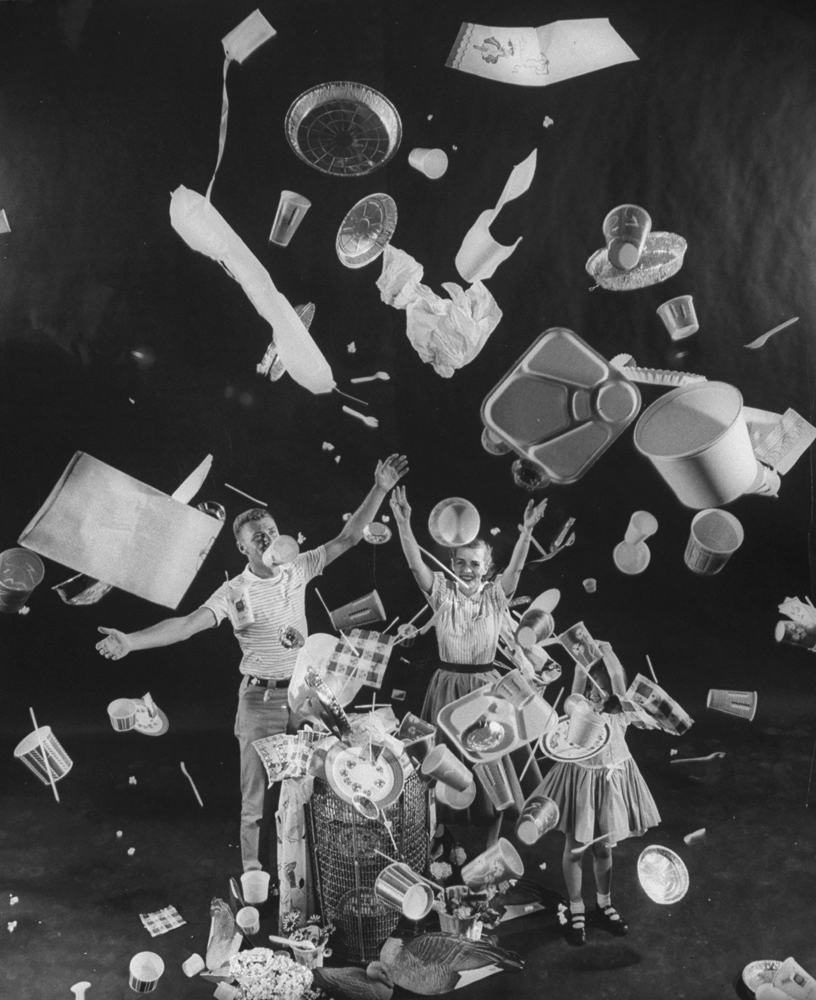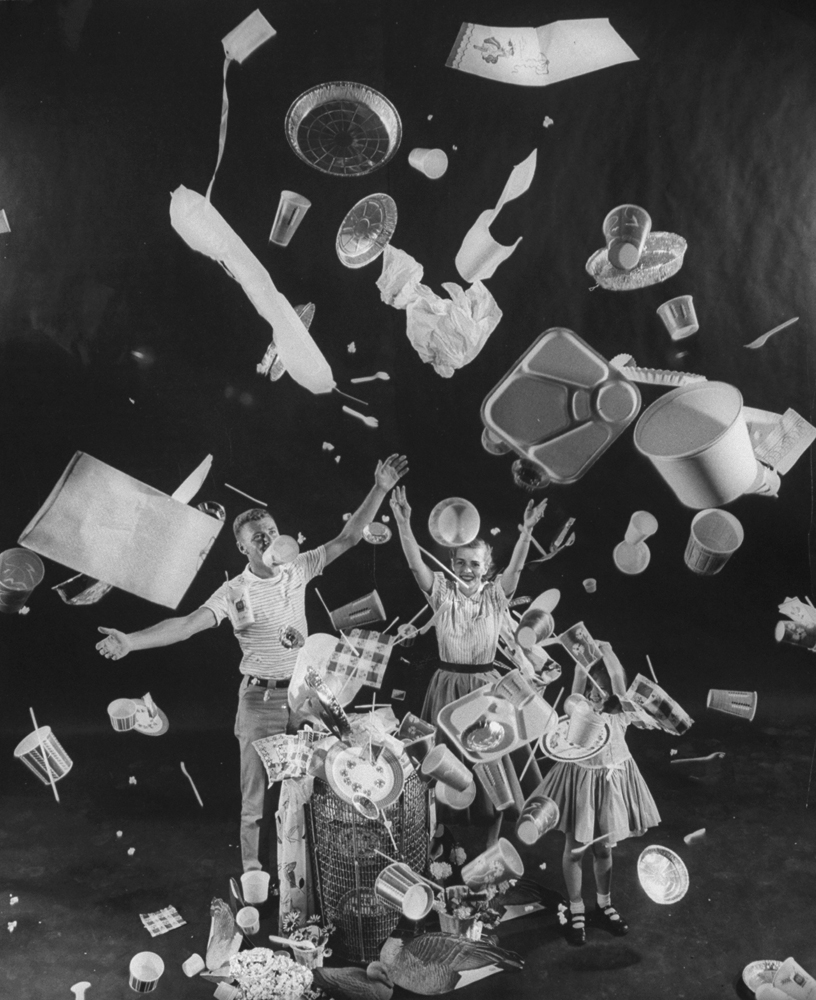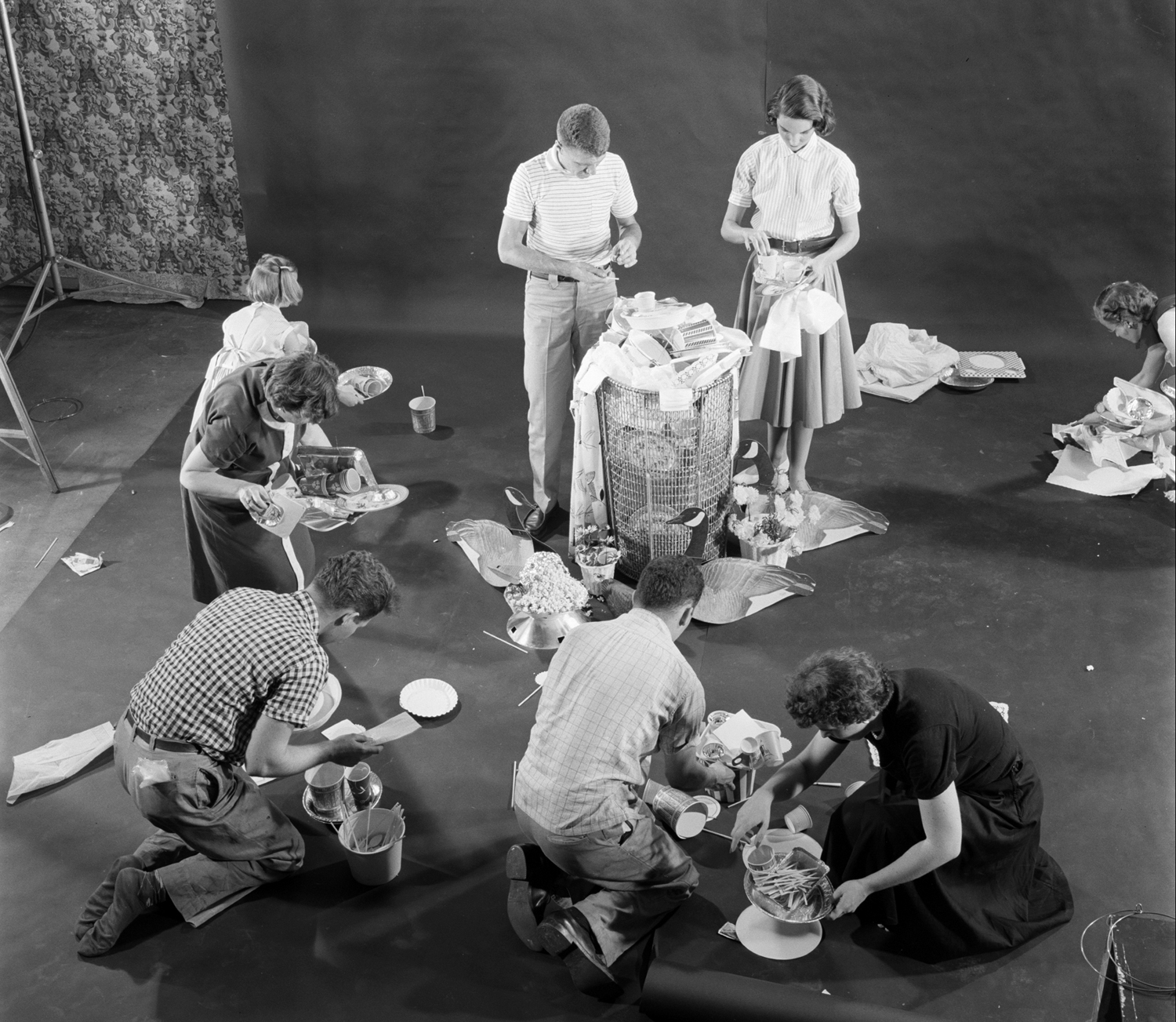
In August 1955, LIFE magazine published an article with the now-vaguely-sinister, then-celebratory title, “Throwaway Living.” The idea, it seems, was that humans had entered a kind of wanton Golden Age, when cleaning up after ourselves was just one more quaint waste of time, and tossing more and more of our used-once items into the trash was another sign of modernity’s relentless ascendancy over the drudgery of the past.
Today, when the phrase “reduce, reuse, recycle” is a mantra that more and more people can recite without cringing, and as places like New York City are actively urging urbanites to embrace the joys of composting, the “throwaway living” era might seem like a time of manic, perpetual jettisoning. (“The objects flying through the air [in the first picture above] would take 40 hours to clean,” LIFE noted, “except that no housewife need bother. They are all meant to be thrown away after use.” Lucky, lucky housewife!)
But before we start feeling too superior about our enlightened ways, keep in mind that while we might be doing better nowadays disposing of our plastics and aluminum and cardboard and such, nearly half of the food produced in the United States each year gets thrown away. That’s roughly $165 billion worth of edibles, effectively tossed in the trash. Seems we’re still part of a throwaway society, after all.


More Must-Reads from TIME
- L.A. Fires Show Reality of 1.5°C of Warming
- Home Losses From L.A. Fires Hasten ‘An Uninsurable Future’
- The Women Refusing to Participate in Trump’s Economy
- Bad Bunny On Heartbreak and New Album
- How to Dress Warmly for Cold Weather
- We’re Lucky to Have Been Alive in the Age of David Lynch
- The Motivational Trick That Makes You Exercise Harder
- Column: No One Won The War in Gaza
Contact us at letters@time.com



